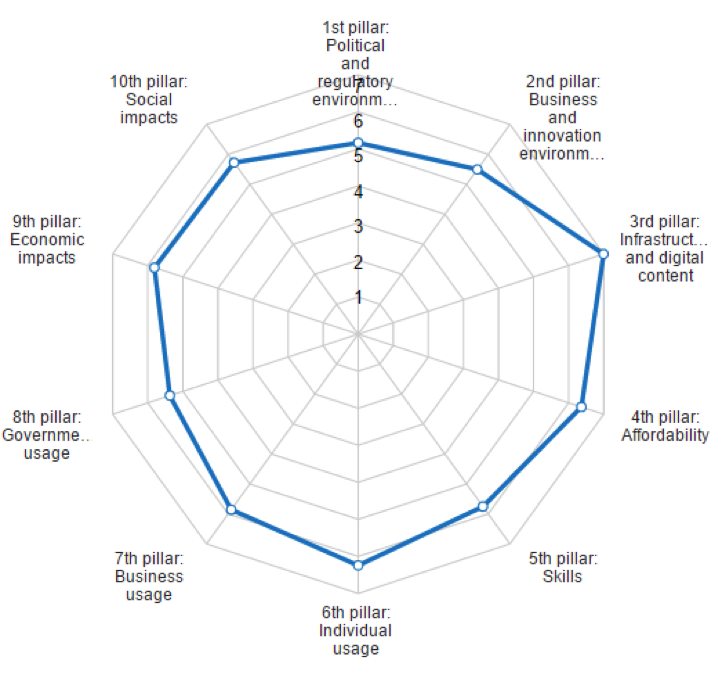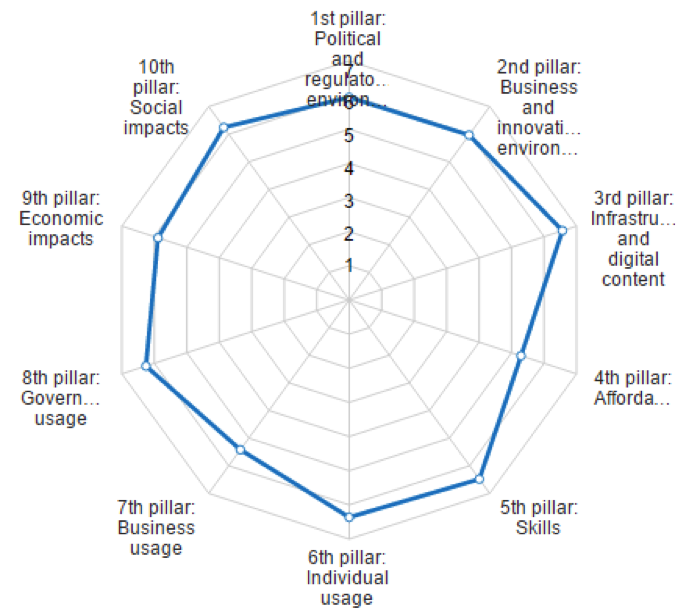Hindered by politics, U.S. ranks 5th in WEF global technology index
Given that the United States is home to Silicon Valley and seven out of the 10 largest tech companies in the world, you might expect it to lead the world in technological process. You’d be wrong, at least according to the World Economic Forum’s (WEF) latest Global Information Technology Report for 2016, released earlier this month.
Although the U.S. has been a frontrunner in high technology development, WEF ranks the U.S. fifth behind Singapore, Finland, Sweden and Norway in a global index of countries.
WEF, a Swiss-based nonprofit that works with business leaders across the globe, uses a Networked Readiness Index (NRI) to calculate the index. This 2016 report features the latest iteration of the NRI, which measures the capacity of countries to use technology and information to improve “competitiveness and well-being.” The rankings are based on scores on 53 indicators across four main categories, with subcategories like “Government Usage” and “Infrastructure.” The NRI, which was launched by the World Economic Forum in 2001, has evolved over time and is used to assess how prepared countries are to reap the benefits of new and evolving technology.
The United States has moved in a positive trend over the past few years, however, moving from the ninth place in 2013 to seventh place in 2014 and 2015 to fifth place in 2016. The U.S. continues to benefit from its comprehensive tech infrastructure, such as mobile network coverage and internet bandwidth, consistently getting full marks in infrastructure.
The U.S. ranks sixth in terms of economic and digital innovation impact, as the technological innovations make businesses more competitive. It is one of the seven countries that benefit most economically from technological innovation.
According to the report, the two main factors that drag down the overall performance of the U.S. are an unpredictable and unreliable political environment and low government commitment. The U.S. ranks 21st in the category of political and regulatory environment, and the score hasn’t seen much growth during the past three years. As we can see from Chart 1 below, the political environment pillar is an obvious shortcoming that drags down the overall score of the U.S.

By comparison, Singapore, which has ranked first both in 2015 and 2016 in NRI, shows better balance in all 10 pillars, as seen in Chart 2 below. It also shows outstanding performance in political environment, ranking second. The biggest issue with the U.S. ranking in this category is the effectiveness of the law-making body of the country, which WEF ranked 49th.

The U.S. ranks 12th in government usage of technology, which means another shortfall in networked readiness. According to the scores in each indicator, the development of ICTs hasn’t been placed at a significant level in the government’s future plan.
As documented on many occasions on this blog, despite ongoing efforts to reform and modernize, the federal government’s use of data and technology remains far from optimal. For example, the report ranks the U.S. 25th when it comes to government promotion of technology services.
That said, WEF both highlights ample room for improvement and validates the ways that the U.S. government is a leader in delivering better digital services and operations.
Unfortunately, sub-Saharan African countries continue to fail in networked readiness: Seven out of the last 10 countries in the WEF index are in that region. Haiti, Burundi and Chad are at the bottom of the index due to poor infrastructure and low levels of individual use of information and communication technologies. Although many sub-Saharan African countries are blessed with abundant natural resources, these countries remain among the poorest countries in the world. Poor political leadership, low transparency and high corruption are key factors that contribute to continued poor performance in these countries.
In that context, it’s worth noting that technological readiness and adoption can play a major role in every country in helping citizens to hold governments to be more transparent and accountable, neither is sufficient. Government transparency is the foundation for promoting technological readiness, since the investment and policy regulations required for implementing technology adoption calls for support from a committed, transparent and efficient government.
In other words, government transparency and technological readiness interact as both cause and effect in a certain degree. Sunlight is committed to helping people around the world use the tools of journalism, advocacy and technology in concert to improve governance.

